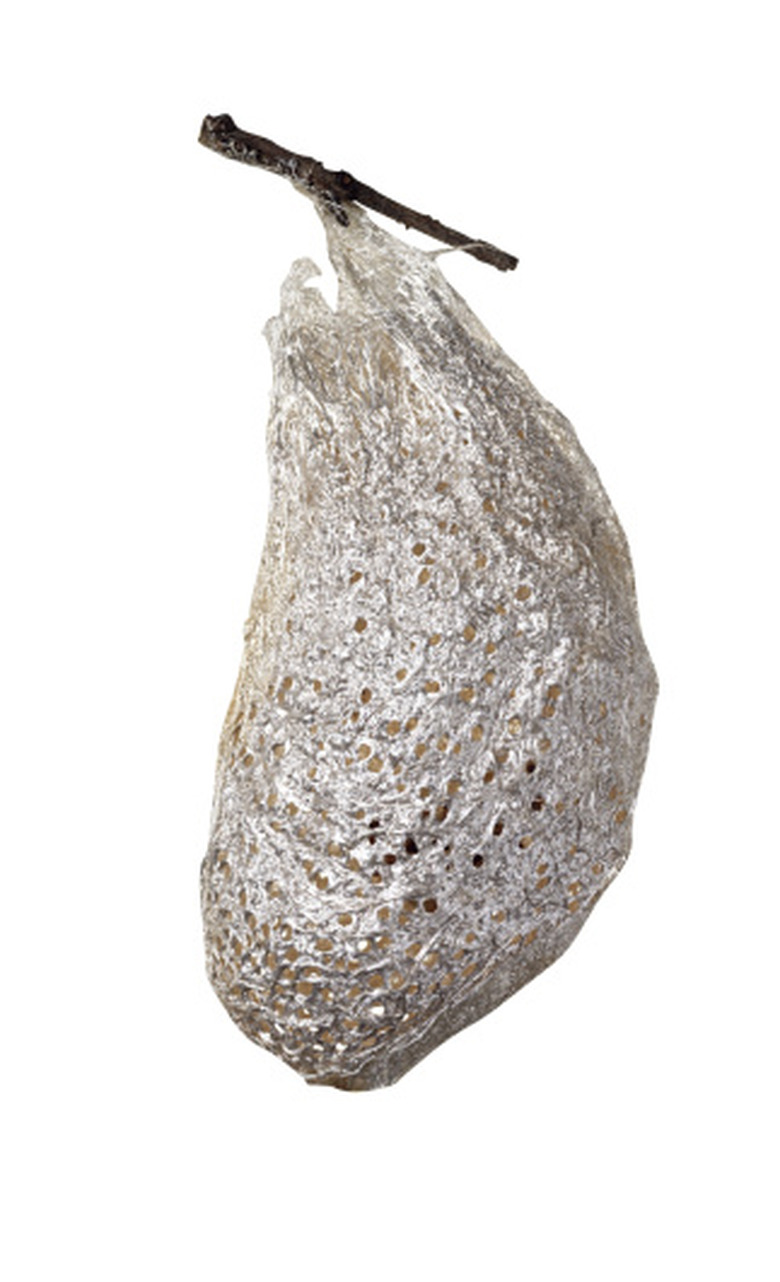How To Identify Cocoons On Trees
Things Needed
- Moth book
- Ruler or tape measure
Tip
Moth caterpillars spin cocoons, while most butterfly caterpillars form chrysalises, which can be similar in appearance. A cocoon is made of silk, which the caterpillar produces from glands. A chrysalis is made of protein, which comes from the caterpillar's skin.
Warning
Do not disturb the cocoon while making your observations.
Caterpillars which turn into moths make cocoons using a thick material they produce in two rear glands. The caterpillars of each moth species make a slightly different type of cocoon. Some cocoons are large, some are tightly woven, and some have multiple layers. Caterpillars add protection to their cocoons by shedding their larval hairs and weaving them into the cocoon's silk. This helps keep predators from eating the cocoon while the caterpillar is undergoing its transformation. The best time of year to find cocoons is early fall.
Step 1
Find a book which depicts a variety of common moths and shows pictures of their caterpillars and cocoons. A book specific to where you live is helpful, since different species of moths occur in different parts of the United States.
- Caterpillars which turn into moths make cocoons using a thick material they produce in two rear glands.
- Caterpillars add protection to their cocoons by shedding their larval hairs and weaving them into the cocoon's silk.
Step 2
Identify the tree the cocoon is hanging from. Chances are good that the caterpillar spun its cocoon from a branch of its main food source. Look over the tree to see if you can locate any caterpillars. Identifying the caterpillar is a little easier than identifying the cocoon, and more than likely, the same species is inhabiting the tree.
Step 3
Read the descriptions given in the book for each caterpillar which eats that specific food. Some of these caterpillar species may make their cocoons underground, which means they would not be a match for the cocoon hanging from the tree.
Step 4
Hold a ruler or tape measure next to the cocoon to measure its length and width, and check the measurements against those in the book.The cocoon's size should help narrow down possible candidates.
- Identify the tree the cocoon is hanging from.
- Identifying the caterpillar is a little easier than identifying the cocoon, and more than likely, the same species is inhabiting the tree.
Step 5
Hold the pictures of the remaining candidates next to the cocoon you encountered. Pay attention to the way the cocoon is hanging from the tree and how tightly woven the thread is.
